In a world where creativity meets entrepreneurship, freelancing has become a popular path for many. Creative freelancers face unique challenges, from managing their time to finding clients who appreciate their artistic vision. Navigating this landscape can be daunting, but with the right strategies, it can also be incredibly rewarding.
Whether it’s a graphic designer, writer, or photographer, each creative professional needs to harness their skills effectively. By implementing smart techniques and staying organized, they can not only boost their productivity but also enhance their creative output. This article dives into essential tips that will empower freelancers to thrive in their artistic careers, ensuring they stand out in a competitive market.
Table of Contents
ToggleCreative Freelancer Tips
- Set Clear Goals
Define specific, measurable goals for both short-term and long-term projects. Clear objectives help freelancers stay focused and track progress effectively.
- Create a Structured Schedule
Establish a consistent work routine that includes designated hours for creative tasks, client communication, and breaks. Structure promotes productivity and helps manage time efficiently.
- Utilize Project Management Tools
Use tools like Trello, Asana, or Notion to organize tasks and deadlines. These platforms streamline workflow and ensure projects remain on track.
- Build a Strong Portfolio
Assemble a portfolio showcasing varied work samples relevant to target clients. A well-curated portfolio demonstrates expertise and attracts potential clients.
- Network Regularly
Attend industry events, conferences, or online forums to connect with other freelancers and potential clients. Networking increases visibility and opens doors to collaboration.
- Develop a Personal Brand
Establish a unique brand identity through consistent visual elements and a cohesive message across all platforms. A strong brand builds recognition and trust.
- Focus on Client Relationships
Communicate clearly and frequently with clients to understand their needs. Strong relationships encourage repeat business and referrals.
- Invest in Continuous Learning
Pursue new skills or trends relevant to the industry through courses, workshops, or webinars. Staying updated enhances creativity and marketability.
- Set Boundaries
Clearly define work hours and personal time to prevent burnout. Boundaries promote a healthy work-life balance, essential for long-term success.
- Seek Feedback
Regularly request constructive feedback from clients or peers to identify areas for improvement. Feedback drives growth and enhances service quality.
Building a Strong Portfolio

A strong portfolio serves as a visual resume, demonstrating skills and attracting potential clients. Crafting a compelling portfolio involves showcasing the best projects and tailoring them to specific audiences.
Showcase Your Best Work
Showcasing exceptional work highlights expertise and creativity. Select high-quality pieces that exemplify versatility, attention to detail, and unique problem-solving skills. Include a mix of finalized projects and process work to illustrate growth and approach. Ensure the portfolio reflects personal style while remaining adaptable to client preferences. Regularly update the portfolio with recently completed projects to maintain relevance and freshness.
Tailor Your Portfolio for Different Clients
Tailoring portfolios increases effectiveness in attracting diverse clients. Research each client’s industry and specific needs before presentation. Customize the selection of work to demonstrate relevant experience and solution-oriented outcomes. Create separate portfolios or sections within one portfolio for different niches, such as graphic design, web development, or video production. This approach highlights suitability and ensures the portfolio resonates with various target audiences.
Networking and Building Relationships
Effective networking and building relationships significantly impact a creative freelancer’s success. By actively engaging with the industry, freelancers can uncover new opportunities and foster meaningful connections.
Utilizing Social Media Platforms
Social media platforms serve as valuable tools for networking. Freelancers can connect with peers, potential clients, and industry influencers on sites like LinkedIn, Twitter, and Instagram. Regularly sharing work, insights, and industry news enhances visibility. Engaging in conversations through comments and direct messages helps develop relationships. Using hashtags relevant to specific niches can also increase exposure to targeted audiences. Joining Facebook groups or online communities dedicated to their field provides platforms for collaboration and support.
Attending Industry Events
Attending industry events proves essential for networking. Freelancers can participate in conferences, workshops, and meetups to meet fellow creatives and industry leaders. Engaging in face-to-face conversations allows for deeper connections than online interactions. Freelancers should prepare an elevator pitch, showcasing their skills and services succinctly. Carrying business cards facilitates easy information sharing. Following up with new connections after events strengthens these relationships, paving the way for potential collaborations and referrals.
Time Management Strategies
Effective time management enhances productivity and allows creative freelancers to balance multiple projects seamlessly. Implementing strategic approaches maximizes output without compromising quality.
Setting Realistic Deadlines
Setting realistic deadlines fosters accountability and efficiency. Breaking larger projects into smaller tasks with individual deadlines ensures progress remains visible. Estimating the time required for each task should include a buffer for unexpected obstacles. Regularly reviewing and adjusting deadlines helps maintain momentum and adapt to changing circumstances. Utilizing techniques like the Pomodoro Technique can further improve concentration by balancing work and breaks.
Tools to Enhance Productivity
Adopting tools designed for productivity boosts overall efficiency. Here are some recommended tools for freelancers:
| Tool | Purpose |
|---|---|
| Trello | Project organization and task tracking |
| Asana | Team collaboration and project management |
| Todoist | Task management and personal productivity |
| Clockify | Time tracking to analyze time spent |
| Evernote | Note-taking and idea organization |
Using productivity tools simplifies project management, keeps tasks organized, and promotes effective time allocation. Regularly exploring new tools and features can lead to further improvements in efficiency and workflow management.
Pricing Your Services
Freelancers must strategically determine pricing for their services to reflect their skills, experience, and the value they provide. This process requires an understanding of industry standards and self-assessment of unique offerings.
Understanding Your Value
Understanding one’s value is crucial for setting appropriate prices. Freelancers should assess their skills, experience, and competition when determining fees. Factors like depth of expertise, niche specialization, and client testimonials can aid in defining value. Freelancers can use market research to find average rates within their industry. This includes evaluating comparable freelancers’ portfolios, client reviews, and service offerings. Furthermore, regularly revisiting these evaluations ensures competitive pricing throughout one’s career.
Different Pricing Models
Freelancers can choose from various pricing models to align with their business objectives and client expectations. Common models include:
- Hourly Rate: Charges based on hours worked. This model suits clients preferring transparent time tracking and freelancers who perform varied, unpredictable tasks.
- Project-Based Pricing: Fixed fees per project. This approach benefits clients looking for clarity on total costs while allowing freelancers to set clear deliverables.
- Retainer Fees: Regular payments for ongoing services. This model ensures consistent income for freelancers while fostering long-term client relationships.
- Value-Based Pricing: Charges based on the value provided to the client rather than the time spent. This strategy requires freelancers to demonstrate quantifiable benefits to clients and can lead to higher earnings.
Selecting a model that resonates with both the freelancer’s operational style and the client’s preferences enhances the likelihood of successful business transactions.
Creative freelancers can thrive in a competitive landscape by implementing effective strategies and maintaining a proactive approach. By setting clear goals and managing time efficiently, they can enhance productivity and creativity.
Building a strong portfolio and nurturing client relationships are essential for attracting and retaining clients. Engaging in networking opportunities and staying updated with industry trends will further bolster their careers.
Ultimately, understanding one’s value and pricing services appropriately can lead to successful business transactions. With the right tools and mindset, freelancers can navigate challenges and achieve their artistic aspirations.


